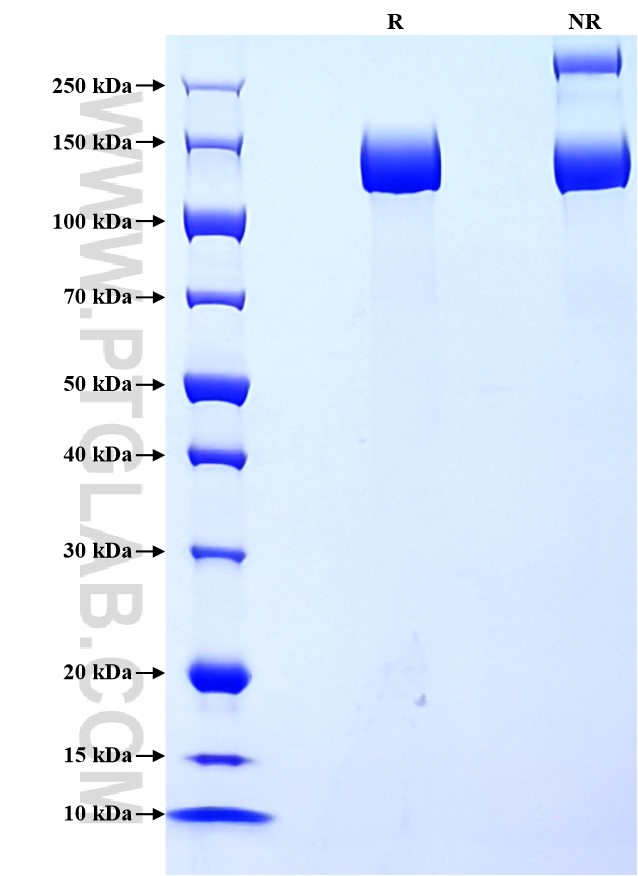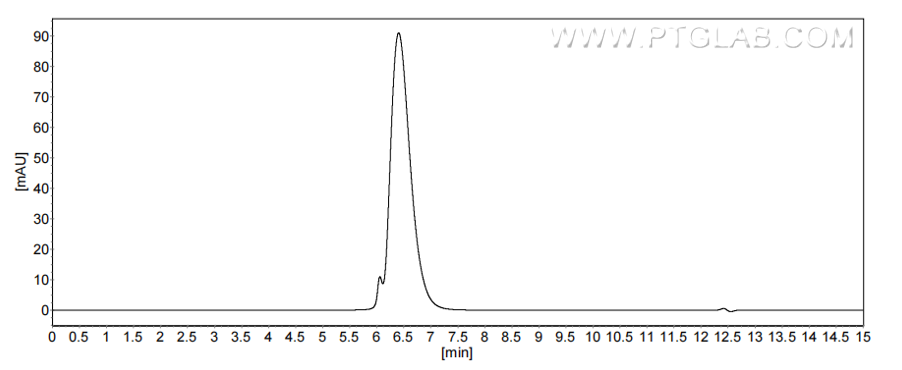Recombinant Human CD13 protein (rFc Tag)(HPLC verified)
种属
Human
纯度
>90 %, SDS-PAGE
>90%, SEC-HPLC
标签
rFc Tag
生物活性
未测试
验证数据展示
产品信息
| 纯度 | >90 %, SDS-PAGE >90%, SEC-HPLC |
| 内毒素 | <0.1 EU/μg protein, LAL method |
| 生物活性 |
Not tested |
| 来源 | HEK293-derived Human CD13 protein Lys69-Lys967 (Accession# P15144) with a rabbit IgG Fc tag at the C-terminus. |
| 基因ID | 290 |
| 蛋白编号 | P15144 |
| 预测分子量 | 129.0 kDa |
| SDS-PAGE | 130-150 kDa, reducing (R) conditions |
| 组分 | Lyophilized from 0.22 μm filtered solution in PBS, pH 7.4. Normally 5% trehalose and 5% mannitol are added as protectants before lyophilization. |
| 复溶 | Briefly centrifuge the tube before opening. Reconstitute at 0.1-0.5 mg/mL in sterile water. |
| 储存条件 |
It is recommended that the protein be aliquoted for optimal storage. Avoid repeated freeze-thaw cycles.
|
| 运输条件 | The product is shipped at ambient temperature. Upon receipt, store it immediately at the recommended temperature. |
背景信息
ANPEP (Aminopeptidase N) is a membrane-associated exonuclease, also known as CD13 or basic amino acid peptidase, that plays a role in glutathione metabolism and exhibits broad substrate specificity. The primary function of ANPEP is the N-terminal amino acid shearing of peptide chains, which participates in the degradation process of proteins, and is also implicated in the regulation of cell-surface antigen expression. ANPEP has been identified as a susceptibility gene for type 2 diabetes (T2D), but the mechanism by which it contributes to the development of the disease is not fully understood, and it has been suggested that it may be mediated through disruption of glutathione metabolism and redox homeostasis.
参考文献:
1. Kim JH,et al. Mol Cell Proteomics. 2022;21(11):100424. 2. Korvyakova Y, et al. Gene. 2025;935:149050.



